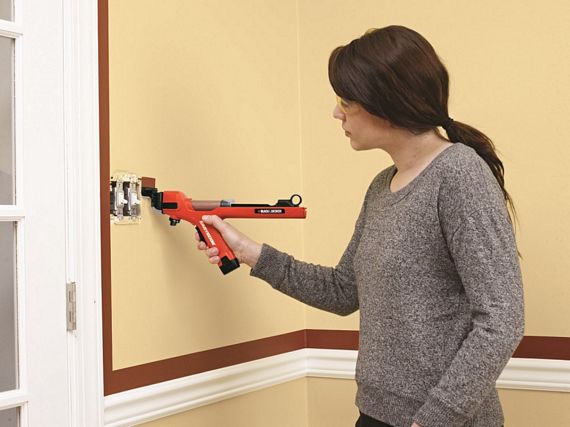 Color cutoff
Color cutoff
Painting, is it the ceiling, or walls, we always start with the so-called. color cutoff, that is, painting the extreme places, borderline: corners, around the door trims and door frames, as well as walls near switches and other elements, which could not be removed. With a roller or a large brush, it would be impossible or at least difficult to obtain a suitably even line of the end of the plane. So we use small brushes, special rollers or even artistic brushes.
First of all, a flat wide brush 5-10 cm we paint the upper corners of the junction of the walls with the ceiling. Ceiling paint is supposed to cover the surfaces and ceilings with a narrow strip, and walls. Then we paint with a wider strip, when the demarcation line is on the wall. We can also paint the wall with ceiling paint; later, an applied wall covering will cover it.
After painting the top corners (cutting off the colors) you can start painting the ceiling, as described later. Before painting the walls, when the ceiling paint is dry, you have to cut off the colors in the rest of the places.
It is favorable, when all kinds of components have been removed, because then the nearby places are painted simultaneously with the surface of the wall. When they are not removed, then we should use a small artistic or flat brush – so as not to soil the element, e.g. Switch. It can also be covered with strips of adhesive tape. We tear them off as soon as we paint the nearby places with paint.
At door frames and trims, the color is cut off with a flat brush, approx 5 cm. First, we apply it with short horizontal stripes at a distance 2-4 cm one from the other. The perpendicular direction of the bristles towards the headband will prevent it from getting dirty. Then, with a vertical stroke, connect the individual strips into one string. In this way, we carefully paint over the surface next to the band.
In the lower corners of the walls, or when the skirting boards have not been removed, before painting, we must thoroughly vacuum the surface. Any residual dirt and dust may cause brush contamination and paint coating defects. In order not to stain the floor, paint the lower part of the wall with a small flat brush. We lead it over an applied piece of card or cardboard, which we move as we paint.
When cutting off the colors in the upper corners, we can also use a flat brush with a width of approx 5 cm. Lightly pressed down, we run evenly, so that the brush's bristles move exactly along the corner line or along the line separating the colors. With a little practice, this is enough to draw a straight line.
We can use self-adhesive tape to paint the demarcation line. We glue it flush with the previously marked demarcation line and above it, on a previously painted surface. Then we paint the lower part of the wall, without worrying about it, stain the tape with paint. We will tear it off before the paint dries.
In the upper corner of the wall, the ceiling paint in a narrow strip also overlaps the wall. When cutting off the color on the wall, paint it with a flat brush, Trying to cover the ceiling paint strip with an even line as close as possible to the corner or the demarcation line. In the corner where two walls meet the ceiling, you need to use a small art brush for painting.
The upper corner of the ceiling is often finished with profiled plasterboards by the ceiling (crowning). We stick them after painting the walls and ceiling. Usually we use gypsum slurry or a special glue. The slats are usually painted before sticking.